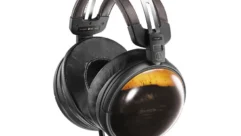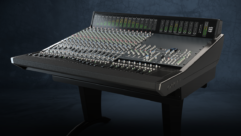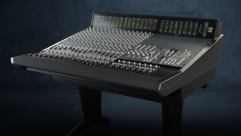SIGNAL PURITY
Jul 1, 1999 12:00 PM,
Bill Whitlock
Finding out how and where such power line-related noises as hum and buzzenter an A-V system can be a frustrating, time-consuming experience. Alltoo often, these problems are solved by using dangerous ground-liftadapters and haphazard cut-and-try experiments, which usually end only whensomeone says, “I can live with that.” The method described here is easy tounderstand, simple to perform and points the way to safe and effectivesolutions. Although I make no claim for inventing this procedure, I know ofno similar technique ever published. It requires no test equipment otherthan ears, and even the underlying theory is simple.
Searching for cluesA significant part of troubleshooting involves the way you think about theproblem. For example, do not think that just because you have donesomething a particular way many times before that it cannot be the problem.Remember, even things that cannot go wrong do. The source of many problemseither reveals itself or can be deduced if we gather enough information. Itis important to have as many clues as possible before you try to solve aproblem. Write everything down-imperfect recall can waste a lot of time-andask lots of questions. Troubleshooting guru Bob Pease suggests these basicquestions [Ref 1]:
* Did it ever work right?
* What symptoms tell you that it is not working right?
* When did it start working badly or stop working?
* What other symptoms showed up just before, just after, or at the sametime as the failure?
Sketch a block diagram of the system. Show all interconnecting cables,indicating approximate length. Mark any balanced inputs or outputs.Generally, stereo pairs can be indicated with a single line. Note anyequipment that is grounded via its three-prong power plug. Note any otherground connections such as cable TV or DSS dishes. Figure 1 is an exampleof such a drawing for a simple home theater system.
Use the equipment’s own controls, along with some logic, to provideadditional clues. If, for example, the noise is unaffected by the settingof a volume control or selector, it must be entering the signal path afterthat control. If the noise can be eliminated by turning the volume down orselecting another input, it must be entering the signal path before thatcontrol.
The four-step programSpecial, easily constructed test adapters allow the system to test itselfand pinpoint the exact entry point for noise or interference. Bytemporarily placing the test adapters at strategic locations in theinterface, precise information about the nature of the problem is alsorevealed. The tests can specifically identify common-impedance coupling inunbalanced cables, shield current induced coupling in balanced cables,magnetic or electrostatic pickup of ambient fields by the cables, orcommon-impedance coupling inside defective equipment (a.k.a. the pin 1problem [Ref 2]). The test adapters can be made from standard parts andwired as shown in Figures 2 and 3 for balanced or unbalanced interfaces,respectively. Because these devices do not pass signals, they should beclearly marked so that they do not accidentally find their way into asystem.
Each signal interface is tested using a four-step procedure. If preliminarytests have not narrowed the problem down to a specific interface or portionof the system, always start at the inputs to the power amps (for audiosystems) or the input to the monitor (for video systems) and work backwardstoward the signal sources. Be careful when performing the tests not todamage loudspeakers or ears. The surest way to avoid possible damage is toturn off the power amp(s) before reconfiguring cables for each test step.
Step by stepIn the first step, unplug the cable from the input of Box B and plug inonly the adapter, as shown in Figure 4. Theoretical basis: This testprevents any noise current, which might otherwise flow in the cable’sshield, from entering Box B. It also effectively shorts the input.Therefore, any noise still present must originate either in Box B itself orsomewhere downstream. Is the system output quiet? No? The problem is eitherin Box B or further downstream. Reconnect the cable and perform this teston the next downstream interface. Yes? Go to the next step.
The second step involves leaving the adapter in place at the input of Box Band plugging the cable into the adapter as shown in Figure 4. Theoreticalbasis: This test retains the shorted input while allowing any noise currentthat might be flowing in the cable’s shield to enter Box B. Therefore, anynoise that appears must be due to common-impedance coupling inside Box Bitself or somewhere downstream.
Is the system output quiet? No? The problem is common-impedance coupling(a.k.a. pin 1 problem) inside Box B or a device farther downstream. Thehummer test [Ref 3] can be performed on Box B to determine this. If theproblem is inside Box B, have the unit repaired, modified or replaced witha properly deigned, functional equivalent. If the problem is not in Box B,reconnect the cable and begin the test procedure on the next downstreaminterface. Yes? Go to the next step.
In the third step, remove the adapter and plug the cable directly into theinput of Box B. Unplug the other end of the cable from the output of Box Aand plug it into the adapter as shown in Figure 4. Do not plug the adapterinto Box A or let it touch anything conductive. Theoretical basis: Byeffectively shorting the far end of the cable, this test uses the cableitself as an antenna to pick up noise from magnetic or electrostaticfields. The far end of the cable is left electrically floating to preventany other currents from flowing in its shield.
Is the system output quiet? No? The noise is coupling into the cable byinduction. This is most often caused by a strong AC magnetic field near thecable. Sources of potent magnetic fields include high-current AC powerwiring, power transformers and television or CRT displays. Electrostaticcoupling is also possible, but it is rare in cables that have a groundedouter shield. Reroute signal cables to avoid such strong fields. Yes? Go tothe next step.
In the final step, leaving the adapter in place on the cable, plug theadapter into the output of Box A. Theoretical basis: This test prevents theoutput of Box A from driving Box B while allowing noise currents to flowthrough the cable’s shield from Box A to Box B. In unbalanced interfaces,Box B is effectively listening to the noise voltage at the far end of thecable caused by noise current flow in the shield. In balanced interfaces,the inner conductor pair is acting as a magnetic pickup loop (it iseffectively shorted at the far end) for any non-uniform magnetic fieldgenerated by the noise current flow in the cable’s shield.
Is the system output quiet? No (unbalanced cable)? Noisy ground currentsare being coupled by the common-impedance of the cable shield. Install anappropriate audio or video ground isolator at the input of Box B.No(balanced cable)? Noisy ground currents flowing in the cable shield arebeing inductively coupled into the inner signal conductors. This problemusually appears only with cables using a foil shield and drain wire. Use acable with a braided shield or take steps to reduce ground current flow inthe shield. Such steps might include measuring the voltage between thechassis of Box A and Box B. If it is more than 100 mV, check the AC outletsfor proper wiring (neutral and safety ground connections may be swapped) orfaulty connections. Yes? The noise is coming from (or through) the outputof Box A. Perform these same tests on the cable(s) that connect Box A toupstream devices.
Too many groundsWhen a system contains two or more pieces of grounded equipment, whetherthrough the power-cord safety grounds or other ground connections, a loopmay be formed as shown in Figure 5, our example home theater system.
Because there is often substantial ground noise voltage between the CATVcable shield and the safety ground for the subwoofer, a relatively largenoise current may flow in the shield of any signal cables that are part ofthe ground loop. In unbalanced interfaces, this current flow results incommon-impedance coupling, which directly adds noise to the signal. Ingeneral, the amount of noise added is in direct proportion to the cable’slength. This example system would probably exhibit a loud hum regardless ofthe input selected or the setting of the volume control because of groundnoise current flow in the 20 foot (6.1 m) cable. The hum might be slightlylouder if the TV input were selected and the volume turned up because thesame ground noise current also flows in the 3 foot (0.9 m) cable.
You might be tempted to break this ground loop with a three-to-two prongadapter, sometimes called a ground lifter. Remember that this adapter isintended to provide a safety ground (via the tab to the cover plate’smounting screw, metallic J-box and conduit) in cases where a three-prongplug is to be used with a two-prong outlet. Audio, video or other cablesthat connect equipment can also carry lethal voltages throughout the systemif just one ground-lifted piece of equipment fails. Never defeat the safetyfunction of the third prong on any equipment having a three-prong AC plug.This practice is both illegal and dangerous.
One safe solution is to break the ground loop by installing a groundisolator in the audio signal path from television to preamp as shown inFigure 6. High-performance ground isolators, like the Jensen ISO-MAXseries, must always be installed at the receiving end of the cable.
Another safe solution is to break the ground loop by installing a groundisolator in the CATV signal path at the television as shown in Figure 7.Troubleshooting even large, complex systems can become manageable iftesting always uses the technique of working backwards toward the signalsources.
Tips for unbalanced interfacesKeep cables as short as possible. Longer cables increase the couplingimpedance. Serious noise problems are common with 50 foot (15.2 m) orlonger cables. Even much shorter cables can produce severe problems ifthere are multiple grounds. Never coil excess cable length, and use cableswith heavy gauge shields. Cables with shields of foil and light gauge drainwires increase coupling impedance. Use cables with heavy braided coppershields, especially for long cables. The only property of cable that hasany significant effect on audio-frequency noise coupling is shieldresistance, and you can compare this with an ordinary ohmmeter.
Maintain good connections. Connectors left undisturbed for long periods candevelop high contact resistance. Hum or other interference that changeswhen the connector is wiggled indicates a poor contact. Use a goodcommercial contact fluid and/or gold-plated connectors to help prevent suchproblems.
Do not add unnecessary grounds. Additional grounding of equipment willgenerally increase circulating ground noise currents rather than reducethem. As emphasized earlier, never disconnect or lift a safety ground orlightning protection ground to solve a problem.
Use ground isolators at problem interfaces. Transformer-based isolatorsmagnetically couple the signal while completely breaking input to outputconnections. This stops the noise current flow in the cable’s shield, whicheliminates common-impedance coupling. A variety of isolators arecommercially available for audio, video and CATV signals.
Tips for Balanced InterfacesBe sure all balanced line pairs are twisted. Twisting is what makes abalanced line immune to magnetic fields that can cause interference. Thisapplies especially to low-level mic cabling. Wiring at terminal orpunchdown blocks is vulnerable because the twisting is opened up,effectively creating a magnetic pickup loop. In particularly hostileenvironments, consider star-quad cable; it has about 40 dB more immunity tomagnetic pickup than standard twisted pair types.
Beware of the pin one problem. Lots of commercial equipment, some fromrespected manufacturers, has this designed-in problem. If disconnecting thecable shield at an input or output reduces a hum problem, the equipment ateither end of that cable may be the culprit.
Use ground isolators to improve CMRR. A quality ground isolator canincrease the noise rejection (CMRR) of a balanced interface by more than 50dB and has other benefits. With a high-performance isolator in place, anybalanced (or unbalanced) input becomes truly universal, accepting signalsfrom balanced or unbalanced sources while maintaining more than 100 dB ofground noise rejection. Such isolators can also solve pin one problems, ifthey exist, and provide inherent suppression of ultrasonic and RFinterference. The resulting reduction of spectral contamination is oftendescribed as a marvelous improvement insonic clarity. A poorly designedtransformer or ground isolator, however, can cause signal degradations,such as loss of deep bass, poor transient response and increaseddistortion. As usual, be wary of cheap products with scanty or nonexistentspecifications.
1. Pease, Robert A. Troubleshooting Analog Circuits,Butterworth-Heine-mann, 1991.
2. Neil Muncy, “Noise Susceptibility in Analog and Digital SignalProcessing Systems,” Journal of the Audio Engineering Society, June 1995,pp 435-453.
3. Jensen Transformers, Application Schematic AS032 (free on request ordownload from www.jensen-transformers.com).










